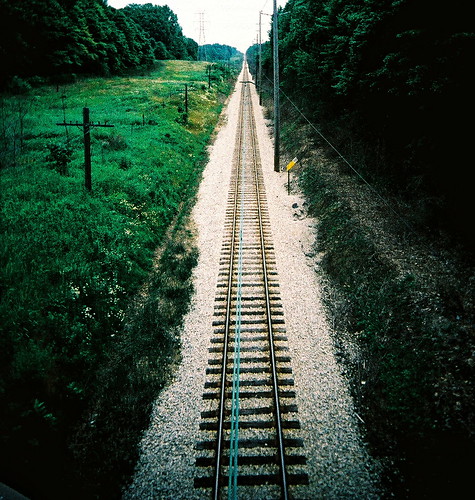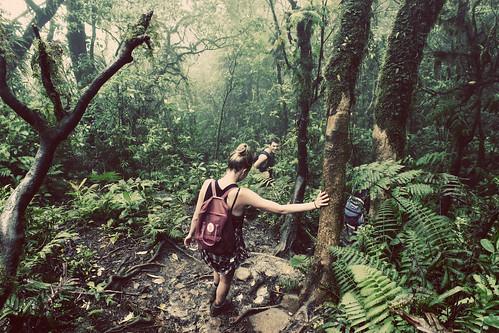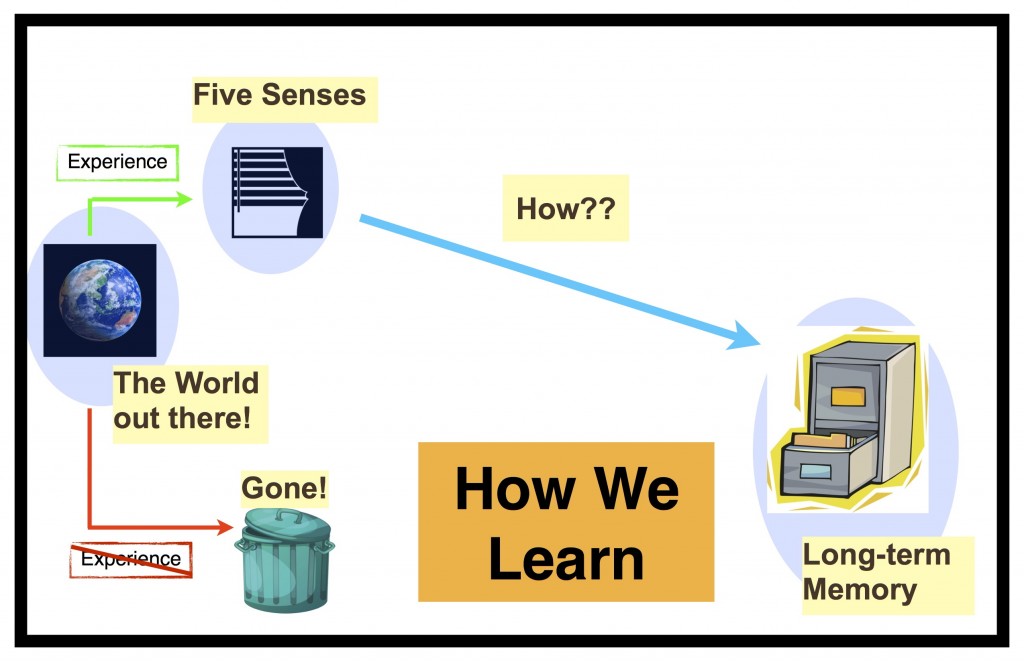
Photo Credit: Kevin Dooley via Compfight
After a slow, hot start our year is picking up some momentum (if not speed). If you were to observe a year in our classroom you would notice that it is not much like a train ride, all clearly marked, well tracked, and powerfully focused. No locomotive of learning surges ever forward following the straight track of knowledge.
Rather, our classroom might have a jungle-like quality, much like what I imagined while listening to an audiobook this summer called The lost city of Z: A tale of deadly obsession in the Amazon. Z is a fascinating tale of late 19th/early 20th century explorers, in particular one named Percy Fawcett, who literally hacked their way through the jungle, tripping over roots, re-routing ’round rivers, and dealing with all the sundry obstacles that stood in their way (there’s some fascinating description of the numerous insects that find human blood delicious, for instance!)

Photo Credit: Thomas Frost Jensen via Compfight
Our learning year is probably more like that jungle! Tangled and slow.
So, knowing that about myself as a teacher — my preference for immersion over toe-testing; of wholeness over the”part-ness” of things, of the tangle over the path — I figured I needed to provide the students with some simple models to ground the work we would do throughout the year.
One model I thought might help was a model of how our brain learns new things. I figured that if they knew that, if they knew the big picture of learning, then it might be easier to understand their current position in the jungle. Sort of the way a map provides context and direction.
Which brings me to another book I read this summer, Dan Willingham’s Why don’t students like school? I’m a fan of books that describe how the brain works: How we decide and Thinking, fast and slow are two that made an impression on me. Dan Willingham’s book helped me see how learning happens because it happens to be about learning.
So, this summer, I created a simplified version of Willingham’s model for the students. I suppose it is also for me, to serve as a reminder of what I shouldn’t forget. My plan is to hang it on the wall, refer to it often, and see if it helps the kids learn how to learn.
Here’s how I introduced it:
Learning is a complicated process that happens inside our brains. What’s too bad about learning is that it’s kind of hard to do well. It can sometimes take a lot of effort. What’s cool about learning is that you get to create your own smartness. Also, learning can be really fun. That means if you want to learn a lot, you can! And by learning a lot, it makes it easier to learn more stuff. Learning is kind of cool, that way.
I’m going to help you figure out how the brain learns things so you can control your own learning better.
So here’s the question, kids: There’s a lot out there that happens in this big old world of ours. Interesting stuff. Important stuff. Hard stuff. Easy stuff. How do we learn about it? How do we put that new stuff in our memory so we’ll remember it for a good long time? How do we change our own brain so it can keep getting smarter and smarter?
Then I showed them a diagram of the question and promised we’d fill in the blanks eventually. But, it might take awhile. We’ll linger on the steps so they really sink in.

The big question: How do we learn?
We talked a bit about that problem: How do we get something that’s completely outside yourself far enough inside yourself so that it becomes a part of you, so you really, really know it? We explored how they learned things in the past to the level of being pretty expert at the activity: throwing and catching a ball; talking; walking, then running; math facts; riding a bike…lots of things.
At the root of all of those learning experiences was exactly that: experience! A learner has to experience something in order to learn it, which brought up the second poster.

It all starts with experience!
So, it all starts with experience. If we don’t experience something, we can’t learn it. Even though there’s more to learning than just experiencing something, without experience there can be no learning.
What does this mean for us as learners? What are the implications? We explored this for awhile.
We need to cast our net widely to gather up as much experience as we can. There are lots of ways to do that. We gave examples from our own lives about how we helped ourselves experience more things: we went interesting places; we asked questions when we didn’t understand; we tried things we didn’t know how to do; we sought to gain courage from others and from inside ourselves to do those things that are difficult.
We talked about attitudes that help us to experience more things. For instance, being curious about all sorts of things allows us to explore and experience more. Being open to failure and what it might teach us might keep us from too quickly saying — “I’m not good at that, that’s why I don’t do it.” — an attitude that closes us off from experiences that might be difficult but important. Reading a lot, or watching the news, opens us up to experiences that we don’t have directly.
As an example, I asked who knew about Diana Nyad, the swimmer who swam from Cuba to the US? Two kids had heard of her and could fairly accurately explain to the others what she had done. I asked the children if they had been there, actually experiencing Nyad’s swim. They laughed and said, of course not! But they had heard about her swim on the news and were curious enough about it that they watched and listened and learned.
I told them about how I learned things from books and the news all the time. I learned important things about the world around me; about life and how to live it well. I told them that people who read a lot make themselves smarter because they are able to add many, many things to their bank of experiences, things they never would have been able to experience in any other way.
I know we’ll explore those issues as we continue to explore why people read.
So, we’re part-way into our exploration about how people learn. We have a couple more steps to go, but already I’m seeing that this exploration might be able to ground our discussion about how learning is helped by growth-oriented attitudes toward learning, attitudes like curiosity and wonder, perseverance, accuracy and exactness, the ability to listen, and to regulate oneself. I’ll introduce these in the next few weeks and we will explore these habits as the year goes along.
Machetes ready? Into the jungle we go.


I want to be in your class.
That’s funny, I was just thinking that about YOUR class! 🙂
I want to be in your class.
PS — the train tracks vs. the jungle = PERFECT.